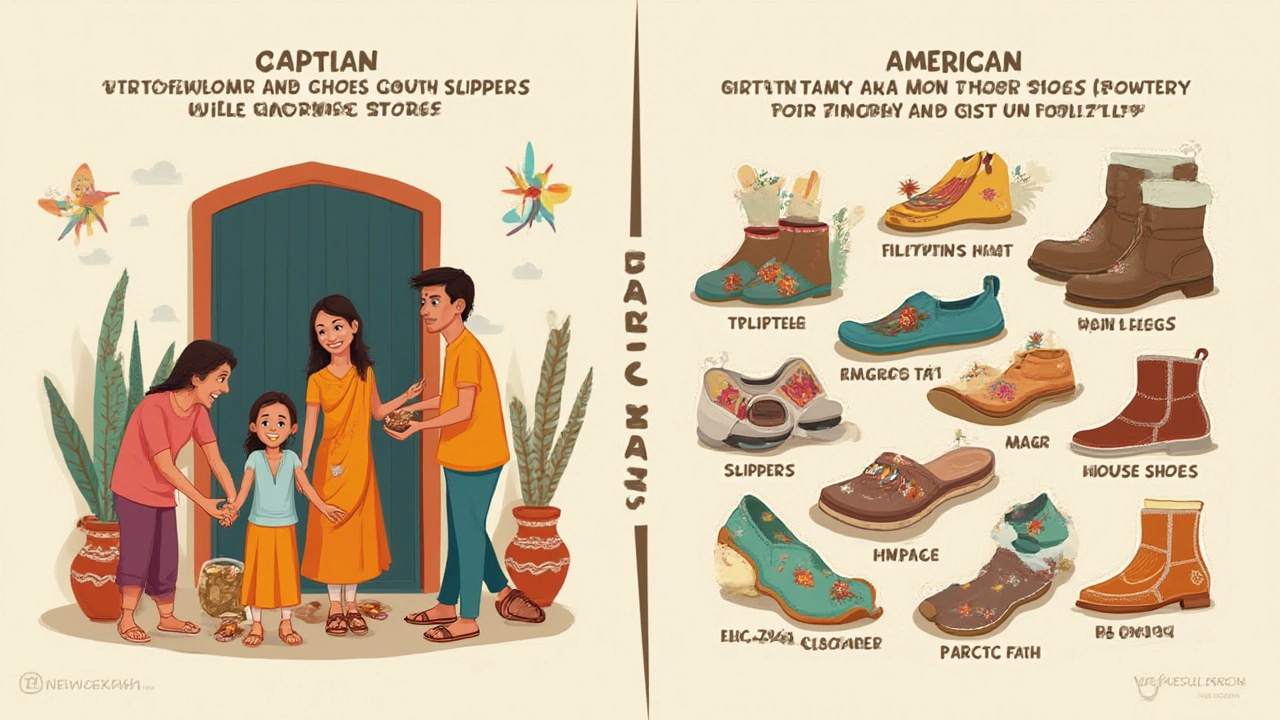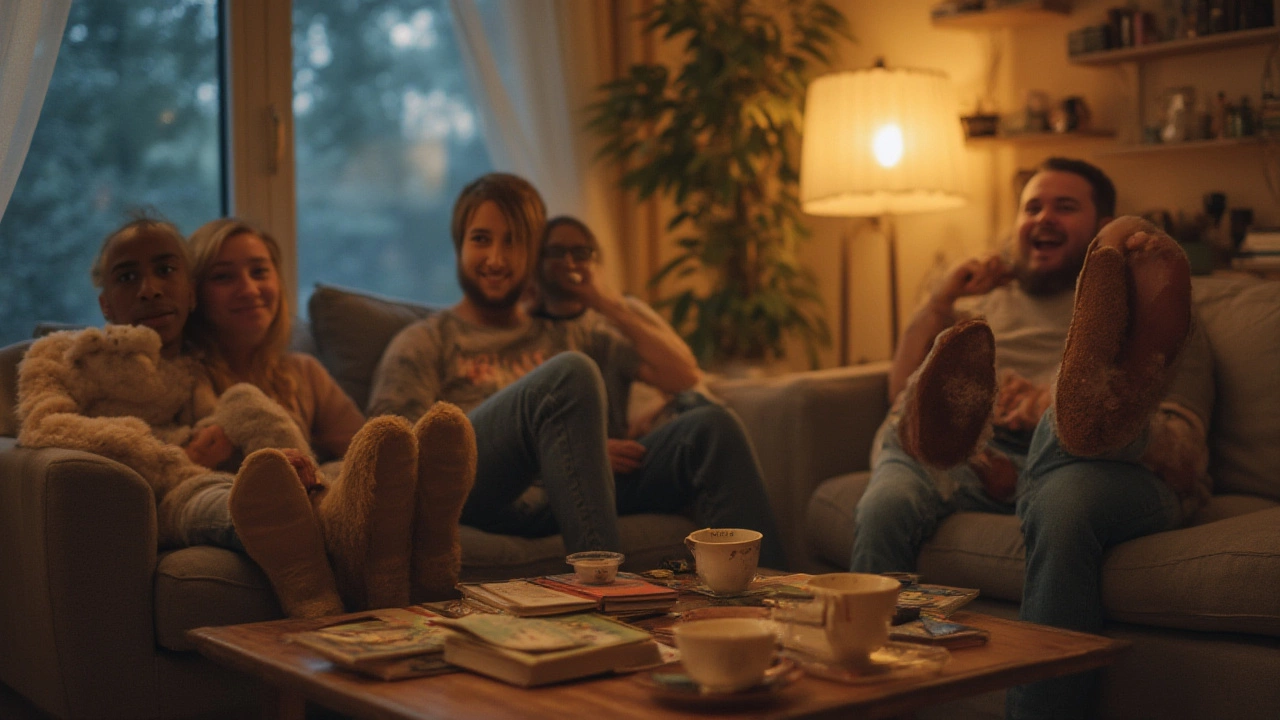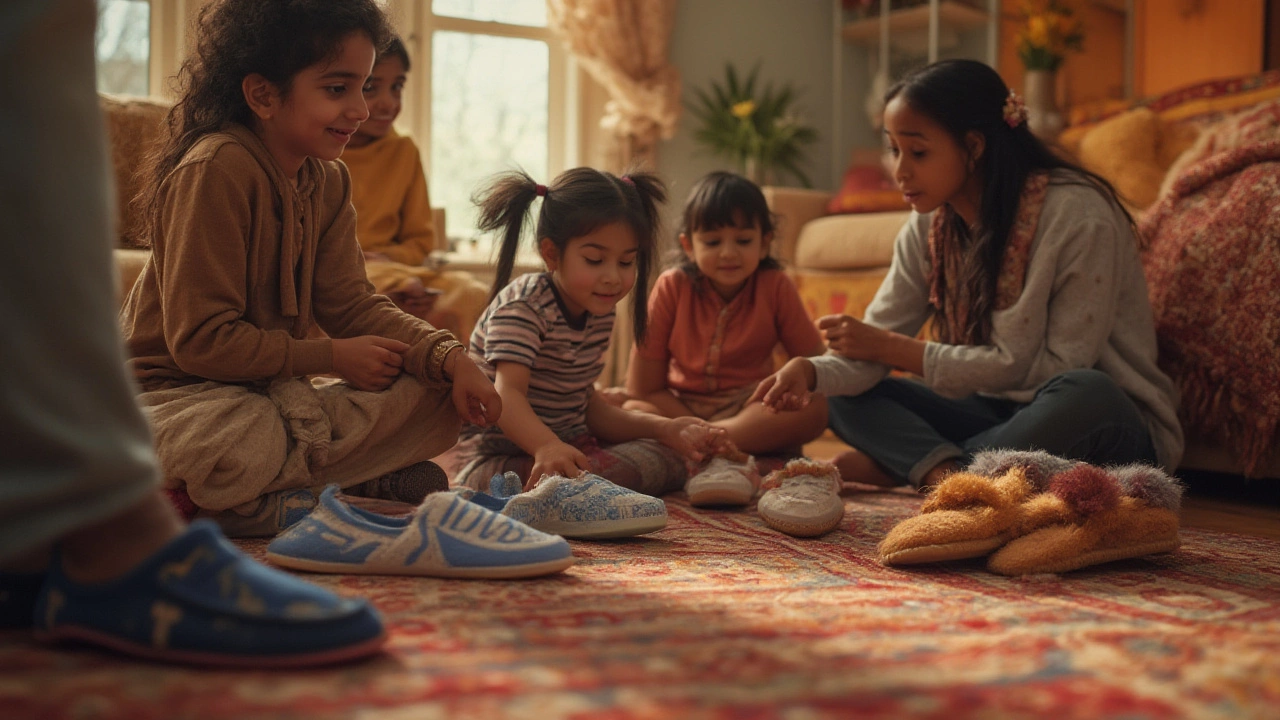Think fast: what do you slip on your feet after kicking off your sneakers at home? Slippers? House shoes? Something else? Ask this seemingly simple question in any U.S. city and you’ll get some pretty different answers. It’s funny—Americans generally agree on what jeans and T-shirts are, but bring up indoor footwear and the language suddenly gets interesting. I stumbled onto this term confusion when my British friend teased me for asking where his "slippers" were, only to show me his “house shoes” that looked suspiciously like exactly what I call slippers. So—do Americans say slippers? The answer is yes…but also maybe not, depending on where you are, who you ask, and sometimes, even their age.
What Do Americans Call Indoor Footwear?
Let’s cut to the chase—American English does use the word “slippers.” But it’s not quite as universal as you might think. In the U.K., "slippers" always means comfy indoor shoes for lounging around the house. In the U.S., the word “slippers” definitely exists, but the picture in your head might not match what your neighbor is thinking. For a lot of Americans, “slippers” means soft, cozy, slip-on (often fuzzy) footwear meant for wearing indoors, especially in winter or colder climates. But ask folks in the South or Midwest, and you might hear the term “house shoes” or even “bedroom shoes.”
There’s also some overlap with what people wear. Not everyone keeps a pair of dedicated indoor shoes. Some people just wear socks, others pad around barefoot, and plenty drop on whatever random shoes are handy if they need to step outside for the mail. Kids, especially, might call any kind of indoor shoe a slipper, whether it’s a cartoon-character-themed thing or an old school moccasin. Elders sometimes use “bedroom slippers,” especially for the classic closed-heel designs. So the term is out there—but the frequency and style change depending on age, region, culture, and even the decade you were raised in.
Regional Differences: Slippers, House Shoes, and More
Language maps of American English show some pretty distinctive regional patterns. The “slippers vs. house shoes” divide is a real thing. Take a look at survey data from the Harvard Dialect Survey or even just listen to conversations between Ohioans and Californians. In many parts of the South, such as Texas or Louisiana, “house shoes” is the default for indoor-only footwear. In some Black American communities, “house shoes” feels more familiar and intimate, passed down from grandparents and parents. Meanwhile, West Coasters or New Englanders are more likely to stick with plain-old “slippers.”
Then there’s the “flip-flop” debate. On the East Coast, a flip-flop is never a slipper—it’s an outdoor sandal for warm weather. But in Hawaii, the universal word is “slippers,” spelled “slippahs,” even for what mainlanders would call flip-flops or sandals. Ask someone from Hawaii for their slippers, and you’re more likely to see beach sandals than fuzzy moccasins. Language is wild that way. In Minnesota, some older generations still use “slipper” where their kids would just say “comfy shoes” or “indoor shoes.” It’s easy to laugh at these differences until you actually travel and find yourself hunting for “house shoes” in a store that only stocks “slippers.”

Why Do Americans Have So Many Different Words?
This isn’t a case of Americans being picky about their vocabulary—it's just how language grows and adapts. America is huge, full of different cultures, climates, and immigrant roots. People in cold-weather states needed ways to keep feet warm indoors—cue the popularity of fuzzy slippers. People in the South, where homes are often warmer and going shoeless isn’t taboo, might not even bother with slippers at all. In big cities where apartments are tightly packed and floors can be chilly year-round, slippers are super popular—sometimes becoming status symbols (have you ever seen luxury designer slippers? Yes, they exist in New York and LA).
Another reason is simple: history. Early European settlers brought the word “slipper” with them, but it melted and mingled with Indigenous and regional American English terms. During the Great Migration, Black Americans carried the phrase “house shoes” from the South to cities across the Midwest. Waves of immigration from Asia and the Middle East, where leaving shoes at the door is customary, impacted what people wear inside, but didn’t always change what it was called. This mashup of traditions is what makes American English so colorful. Today, you might walk into a household that has a no-shoe rule (very common on the West Coast) and see a rack of slippers for guests. Or you might visit a family that never wears anything inside and hasn’t owned “slippers” in decades.
"Slippers are more than just shoes—they’re a symbol of comfort, of being home. But what we call them tells a story about where we’re from and who we are," says Dr. Lisa Green, professor of American English at the University of Massachusetts.
The Origin and Evolution of the Slipper in America
Let’s get a bit nerdy for a second: the slipper has a long history. The very first slippers date back thousands of years, documented in ancient Egypt and China, mostly as status symbols for the rich. European aristocrats wore delicate, embroidered slippers indoors—a sign of class and privilege. The word itself comes from the Old English "slipor," meaning slip-on. When slippers crossed the Atlantic, they adapted to the more rugged, practical lifestyles of American families. Early American slippers were like soft moccasins, inspired by Native American footwear. They were practical as much as comfortable, perfect for cold hardwood floors in unheated houses.
By the mid-20th century, slippers took on new life through mass production. Think of the classic fuzzy mule slippers from the 1950s—my grandma had a pair. Moccasin slippers became mainstream, partly thanks to brands like Minnetonka, which launched in 1946 in Minneapolis and became iconic across the U.S. Fast-forward to today, and slippers are everywhere from big-box stores to luxury boutiques. Uggs took over college campuses and then mainstream fashion in the early 2000s. Now you’ll even spot “house shoes” as part of streetwear culture. And with remote work on the rise, slipper sales have spiked in recent years—Forbes reported a 70% growth in slipper sales during the 2020 pandemic lockdowns.

Tips for Choosing and Caring for Slippers (Or House Shoes!)
Now that you know Americans really do say slippers (most of the time), what should you keep in mind when shopping? Don’t just grab the cheapest fuzzy thing you see. Good slippers or house shoes can save your back—literally. Look for options with arch support if you have hardwood or tile floors. Closed-heel styles stay on better if you move around a lot, while open-back slippers are great for quick trips to the porch. Memory foam or thick wool insoles offer extra comfort in winter. For those allergic to synthetic fibers, hunt down cotton or sheepskin styles. If you’re worried about slipping, make sure the soles are anti-skid or rubberized, especially if you’ve got kids or pets darting around.
It’s easy to forget to clean slippers, but you really should. Most fabric slippers are machine washable—just air-dry them to keep their shape. Leather or suede slippers need gentler care; use a brush or damp cloth to keep dust away. And don’t be shy about owning more than one pair. I keep an old beat-up pair for taking out the trash and another clean pair for lazy days on the couch. If you’re buying for family, consider getting everyone their own personalized pair. My wife, Fiona, swears by slippers with memory foam soles and backs that don't flop. She says it feels like walking on clouds—pretty high praise from someone picky about comfort!
So, do Americans say slippers? Absolutely, but don’t be surprised if you hear “house shoes” or see indoor sandals called “slippers” in Hawaii. The next time someone raises an eyebrow at how you talk about your cozy indoor shoes, just smile—you're in good company, no matter what you call them.
